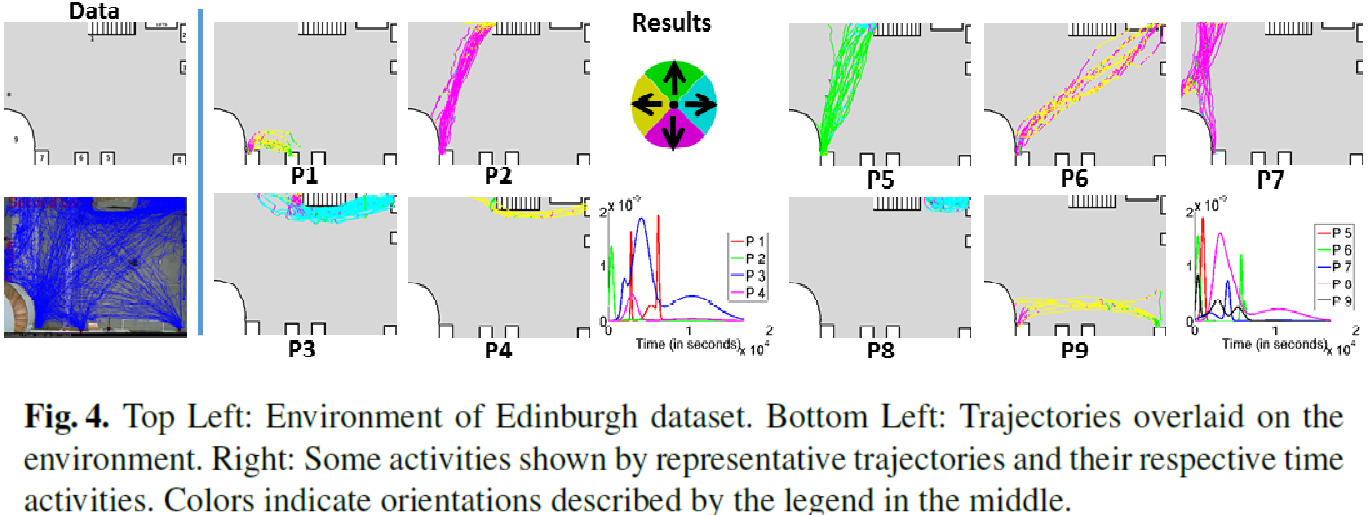Automatically recognizing activities in video is a classic problem in
vision and helps to understand behaviors, describe scenes and detect anomalies.
We propose an unsupervised method for such purposes. Given video data, we discover
recurring activity patterns that appear, peak, wane and disappear over time.
By using non-parametric Bayesian methods, we learn coupled spatial and temporal
patterns with minimum prior knowledge. To model the temporal changes of
patterns, previous works compute Markovian progressions or locally continuous
motifs whereas we model time in a globally continuous and non-Markovian way.
Visually, the patterns depict flows of major activities. Temporally, each pattern
has its own unique appearance-disappearance cycles. To compute compact pattern
representations, we also propose a hybrid sampling method. By combining
these patterns with detailed environment information, we interpret the semantics
of activities and report anomalies. Also, our method fits data better and detects
anomalies that were difficult to detect previously.
Abstract
Resources
-
, .
Globally Continuous and Non-Markovian Crowd Activity Analysis from Videos.
The European Conference on Computer Vision (ECCV).
2016
(Spotlight, 2.9% of submissions)
Conference
Paper Video Code Supplement BibTex @inproceedings{wang2016globally, author = {He Wang and Carol O'Sullivan}, title = {Globally Continuous and Non-Markovian Crowd Activity Analysis from Videos}, booktitle = {The European Conference on Computer Vision (ECCV)}, year = {2016} }
